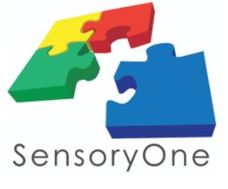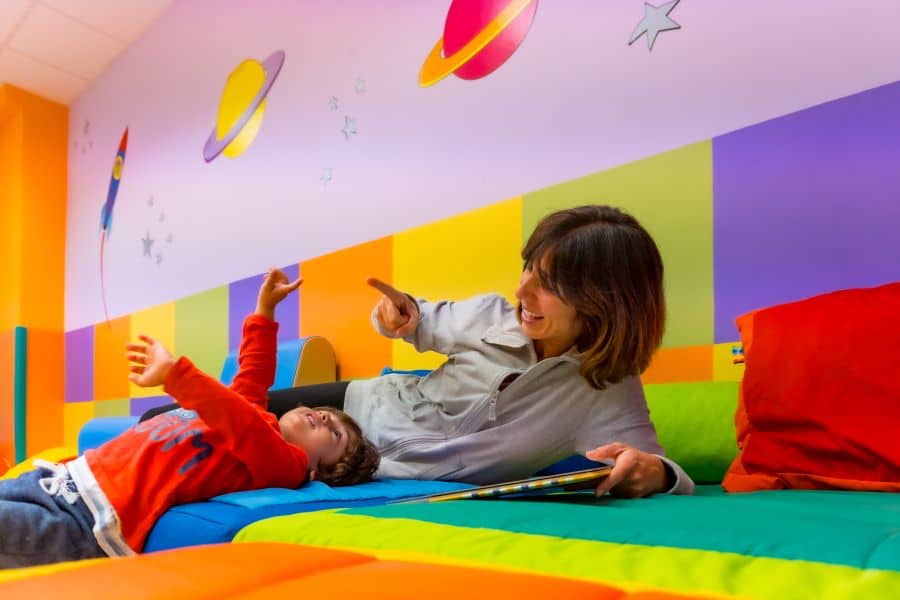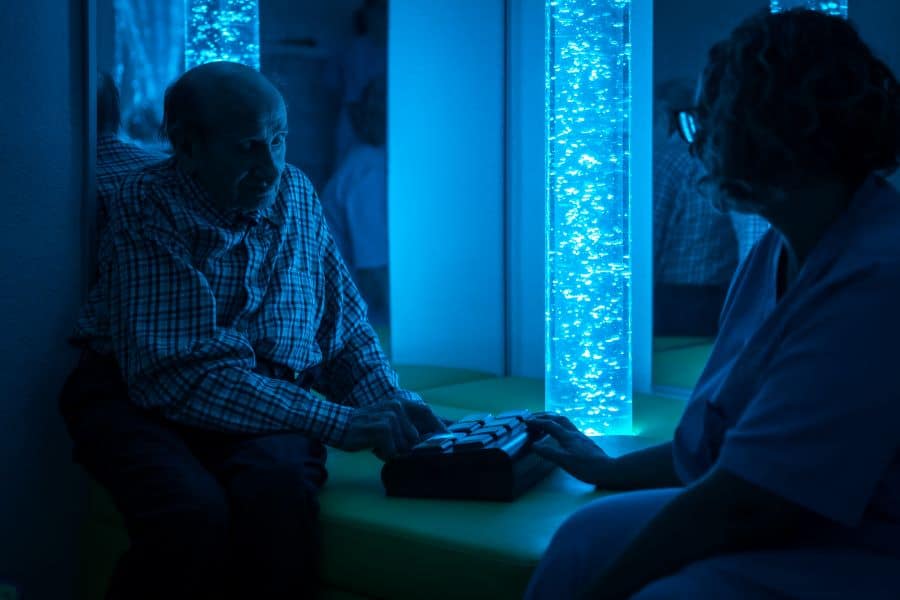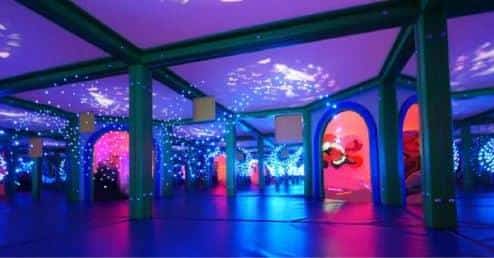In long-term care, especially in dementia-focused units, keeping residents engaged, calm, and connected can be a daily challenge. As cognitive abilities decline, traditional activities may no longer hold attention or bring joy. But technology is opening new doors—literally and figuratively. Sensory environments increasingly play a large role in dementia care.
Interactive projection systems, particularly motion-activated wall or table surfaces like those developed by OM Interactive, are emerging as powerful tools in dementia care. These systems don’t just entertain. They stimulate cognition, support emotional well-being, and give caregivers new ways to connect with residents in meaningful, low-pressure ways.
At SensoryOne, we understands varied populations our clients work with, in particular dementia and senior care homes. Let’s discover, together, the ideal technologies and apparatus to help your patients thrive. Call today.
What Is an Interactive Projection System?
Interactive projection systems use overhead projectors and sensors to create dynamic, touch-responsive visual displays on surfaces like tables, floors, or walls. The system detects hand or body movement, triggering animations, sounds, and changes in response.
For example, a resident can “push” a pile of autumn leaves, catch floating bubbles, or reveal images beneath a digital curtain—all through gentle hand motions. There are no buttons, no remotes—just intuitive interaction.
This simplicity makes the systems accessible to users with physical or cognitive limitations, including many living with dementia.
Why It Matters in Dementia Care
Dementia affects memory, mood, motor skills, and attention. It also impacts how people relate to the world around them—and to others. Activities that once brought joy may now be confusing or overwhelming. As a result, residents often withdraw or become agitated.
Interactive projection offers a different kind of engagement. It’s low-barrier, nonverbal, and flexible—ideal for people who may not be able to follow instructions or sit for long periods.

Proven Benefits for Residents
Research and anecdotal evidence suggest a range of outcomes when interactive projection is integrated into care routines:
1. Cognitive Stimulation
Games that involve sorting, matching, or cause-and-effect interactions help stimulate attention, memory, and executive function. They activate parts of the brain that may otherwise remain underused during passive activities.
2. Emotional Engagement
Many activities incorporate nostalgic themes (like classic images, music, or seasonal visuals), which can help residents access long-term memory and provide emotional grounding.
3. Motor Activity
Even gentle hand or arm movement helps promote circulation, coordination, and muscle engagement. For residents with limited mobility, this is a significant advantage.
4. Social Interaction
Systems like OM Interactive allow for multiple users at once, creating shared experiences. Residents who are often quiet or withdrawn may become talkative or animated while interacting with the table.
5. Reduced Agitation
By redirecting energy and offering soothing or stimulating content, interactive projection can help de-escalate frustration and anxiety—a major benefit in managing dementia-related behaviors.
A New Tool for Caregivers, Too
The impact isn’t limited to residents. Caregivers gain a valuable, low-effort way to connect with those in their care. Activities don’t require extensive prep or facilitation. Instead, they offer a consistent and repeatable method to initiate positive engagement.
Care staff often report that residents seem “more like themselves” when using these tools. There’s room for spontaneous interaction—a shared laugh, a smile, a moment of recognition—that builds trust and connection.
This also supports caregiver well-being, as it reduces stress, improves staff-resident relationships, and introduces moments of joy in what can be a high-pressure environment.
Spotlight: OM Interactive Systems
OM Interactive, a UK-based leader in motion-activated sensory technology, has seen global adoption of its systems in dementia care. Their Mobii table system is especially popular for its flexibility, allowing projection on both horizontal and vertical surfaces, and its library of dementia-friendly content designed with therapists and researchers.
OM systems are now in use across long-term care homes in Canada, offering a practical solution for organizations seeking to improve quality of life through technology. Many homes integrate them into daily or weekly programming, alongside music therapy, art, and exercise.
Backed by Research and Community Impact
Interactive sensory activities are supported by numerous studies and endorsements. According to the Alzheimer Society of Canada, multisensory stimulation can help reduce agitation, improve mood, and increase alertness in people with dementia. These effects are amplified when the engagement is meaningful and interactive.
OM Interactive systems have also been cited in UK-based studies for improving mood, behavior, and engagement levels in both group and one-on-one settings.
Final Thoughts
Technology will never replace human care. But it can enhance the care experience—for residents, staff, and families. Interactive projection systems aren’t about screen time. They’re about connection, memory, and joy—on residents’ terms.
As long-term care facilities continue to innovate, tools like OM Interactive’s systems represent a step forward in dementia care—one that’s grounded in empathy, backed by research, and driven by real human outcomes.







